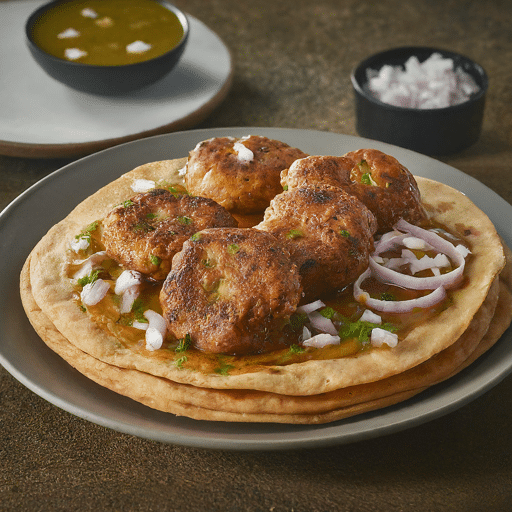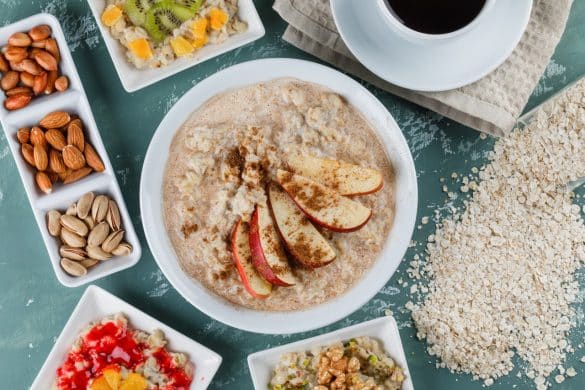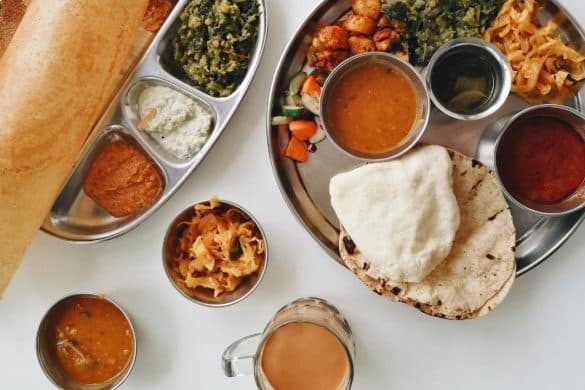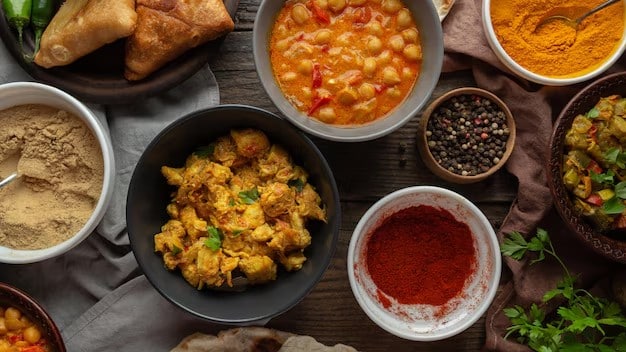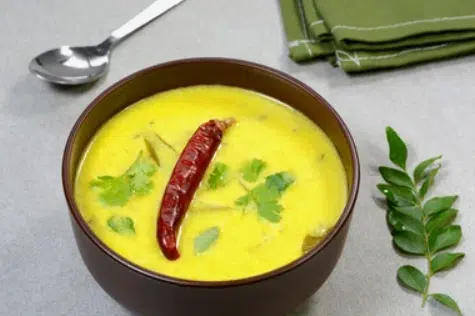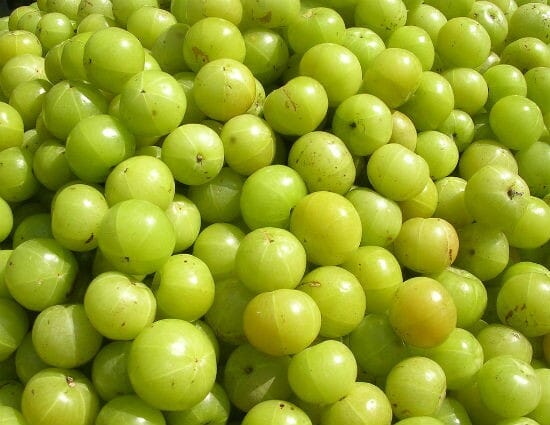Mughlai cuisine is a culinary treasure that originated during the Mughal Empire, which ruled the Indian subcontinent from the 16th to the 19th century. This cuisine is an exquisite blend of Indian and Persian flavours, resulting in dishes known for their richness and complexity. The Mughals, who were of Turkic and Mongol descent, introduced a unique culinary style influenced by their Persian heritage, characterized by its distinct aroma and use of whole and ground spices.
The Mughal emperors were known for their extravagant lifestyles, and their love for fine dining was reflected in the dishes prepared in their royal kitchens. The cuisine emphasized aromatic spices, rich gravies, and slow-cooked meats. These dishes were created to please the palates of the royal court and were often indulgent and luxurious.
Mughlai cuisine offers many dishes that will tantalize your taste buds. Whether you’re a fan of meat or prefer vegetarian options, there is something for everyone to enjoy. From aromatic biryanis to tandoori chicken and creamy kormas, Mughal cuisine is a culinary delight that will transport you to the royal kitchens of the past. Explore some of the top Mughal cuisine dishes for an unforgettable dining experience next time.
Most Popular Delicacies of Mughal Cuisine
Chicken Korma
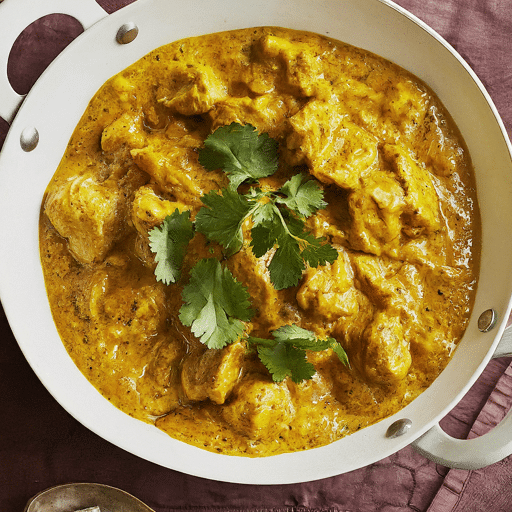
Creamy fragrant curry with chicken yoghurt nuts and spices
One of the most popular Mughlai dishes, Chicken Korma, is a creamy and flavourful curry favourite among non-vegetarians. Made with succulent pieces of chicken cooked in a rich gravy, this dish is a true indulgence. The key to a delicious Chicken Korma is aromatic spices like cardamom, cinnamon, and nutmeg, which give it its distinctive Mughlai flavour. Adding yoghurt lends a creamy texture to the gravy, making it a perfect accompaniment to naan or rice.
Murgh Musallam
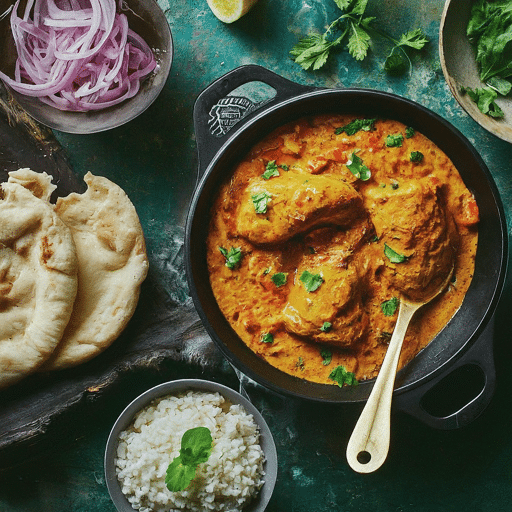
Whole chicken marinated in spices and yoghurt roasted in a tandoor oven
Another must-try dish is the Murgh Musallam, a royal delicacy made with a whole chicken stuffed with spices, dry fruits, and eggs, and cooked in a buttery, cashew-based gravy. Whether cooking for a special occasion or simply craving a comforting meal, these dishes are a must-try for anyone looking to indulge in the rich and flavourful Mughal cuisine.
Nihari Mutton
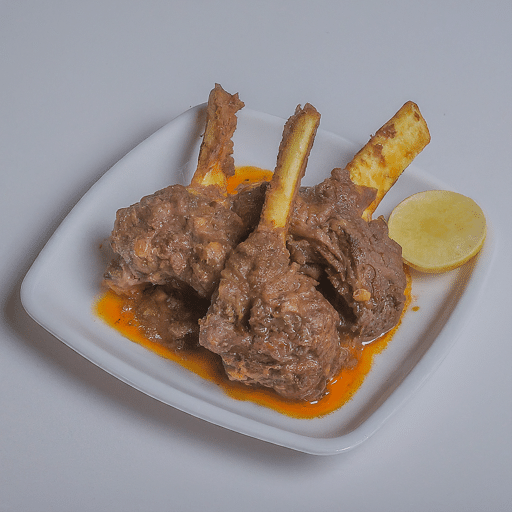
Slow cooked mutton stew traditionally eaten for breakfast
Nihari Mutton is a slow-cooked delicacy that originated in the royal kitchens of the Mughal emperors. This rich and flavourful dish is made by simmering tender pieces of mutton in a blend of aromatic spices for hours, resulting in a melt-in-your-mouth texture and a depth of flavour that is truly exceptional. The slow cooking process allows the flavours to develop and intensify, making Nihari Mutton a dish perfect for special occasions or when craving something indulgent. Pair it with naan or rice for a truly satisfying culinary experience.
Mutton Seekh Kebab
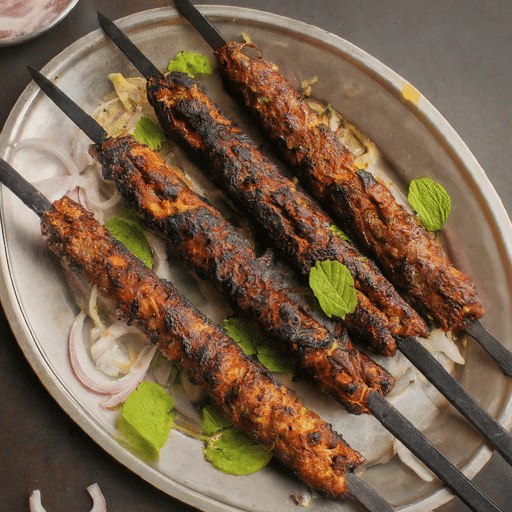
Minced mutton kebabs grilled on skewers
Mutton Seekh Kebab is a classic Mughlai dish originating in Central Asian cuisine. Made with minced mutton blended with various spices and grilled to perfection, these kebabs are a real treat for meat lovers. The smoky and charred flavours of the kebabs pair well with tandoori roti or naan, often served as an appetizer or as part of a larger meal. Mutton Seekh Kebabs are also a popular choice for special occasions and celebrations. To complete the Mughlai experience, indulge in some traditional Mughlai desserts after enjoying these delicious kebabs.
Mughlai Paratha
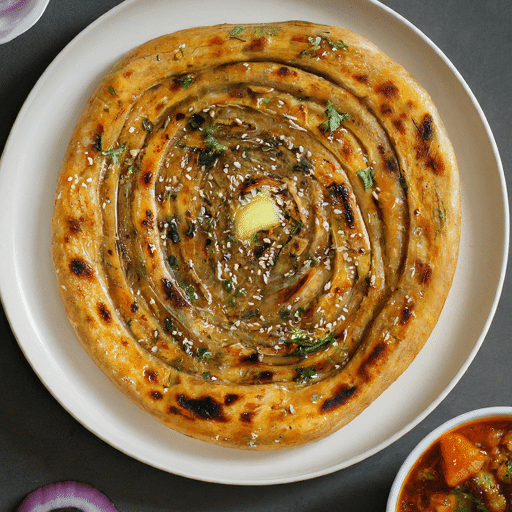
Flaky layered flatbread often cooked in ghee or butter
Mughlai Paratha is a popular street food from Bengal, known for its delicious and indulgent flavours. This stuffed bread is made by filling the dough with minced meat, eggs, onions, and spices, including coriander. The paratha is then shallow-fried in ghee until golden and crispy. Mughlai Paratha is perfect for those who love to indulge in flavourful and hearty Indian food. Enjoy it with a side of raita or pickles for a complete and satisfying meal.
Nargisi Kofta
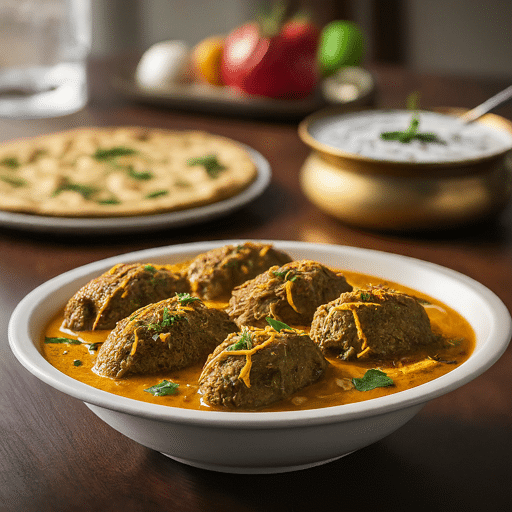
Potato dumplings fried and served in a creamy sauce
Nargisi Kofta is a classic Mughlai dish that is visually appealing and delicious. The dish is made by stuffing hard-boiled eggs with a flavourful minced meat mixture and then coating them with a rich and creamy gravy. The koftas are cooked in gravy until they are tender and infused with the flavours of the spices. Nargisi Kofta is often a main course dish and pairs well with naan or rice. This dish is a favourite among Mughlai cuisine lovers and is a must-try for those looking to explore the rich and indulgent flavours of this cuisine.
Lamb Korma
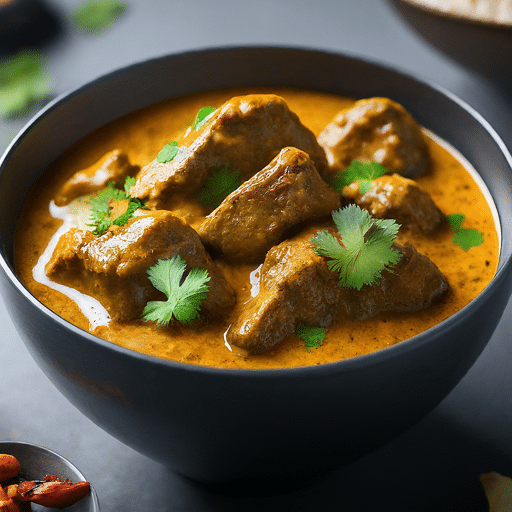
Rich and flavourful lamb curry similar to Chicken Korma
Lamb Korma is a luxurious and flavourful dish that is the hallmark of Mughal cuisine. This dish is a true indulgence made with tender pieces of lamb cooked in a rich and aromatic gravy. The slow cooking process allows the flavours of the spices to infuse into the meat, resulting in a melt-in-your-mouth texture and a depth of flavour that is simply irresistible. Adding creamy ingredients like yoghurt and heavy cream gives the Korma a luscious and velvety texture. Lamb Korma is often served on special occasions and is best enjoyed with naan or rice.
Galouti Kebab
Minced mutton kebabs so finely ground they melt in your mouthTransport your taste buds to the regal courts of Lucknow with our Nawabi Minced Meat Delight – Galouti Kebabs, known for their melt-in-your-mouth texture and robust flavours. These kebabs are made with finely minced and marinated meat mixed with aromatic spices and herbs. The meat is then shaped into patties and cooked on a hot grill until perfectly browned and juicy. Galouti Kebabs are traditionally served with ulte tawa ka parantha, a flaky and layered bread, and are often accompanied by mint chutney and onion rings. These kebabs are a true delight for meat lovers and are a must-try dish when exploring Mughlai cuisine.
Kadai Paneer
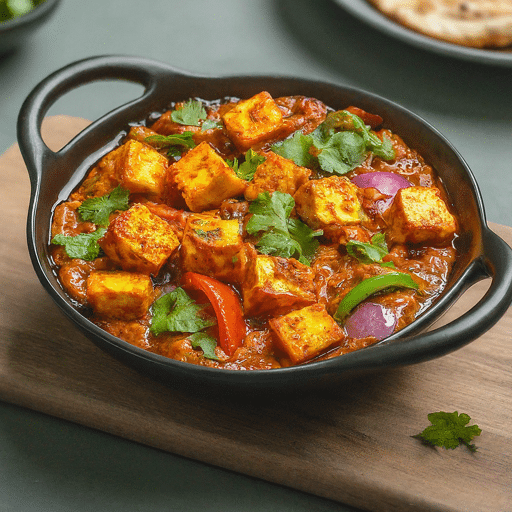
Cottage cheese cooked in a spicy tomato based sauce
Kadai Paneer is a popular vegetarian dish loved by vegetarians and non-vegetarians alike. This flavourful dish is made with paneer, a type of Indian cheese cooked in rich and spicy tomato-based gravy. The dish gets its name from the traditional Indian cooking vessel, the kadai, in which it is prepared. Kadai Paneer is often made with bell peppers and a blend of aromatic spices, giving it a vibrant and robust flavour. This dish is a favourite among Indian households and is often served with naan or rice.
Also Read: How to make Palak Paneer?
Kashmiri Mutton Stew
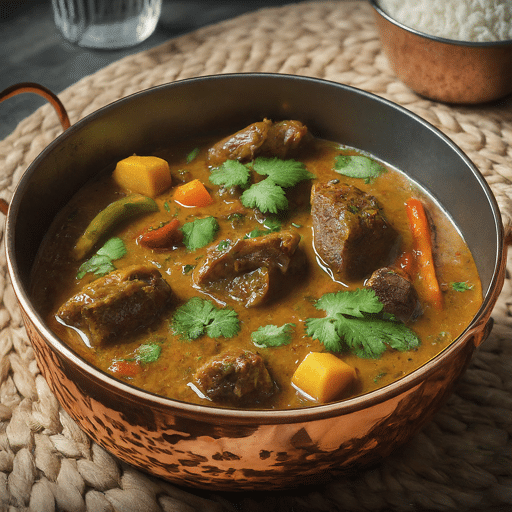
Fragrant mutton stew with Kashmiri spices often served with rice
Embark on a culinary journey to the breathtaking landscapes of Kashmir with this soul-warming mutton stew. Crafted carefully, this dish harmoniously blends aromatic spices and fragrant herbs with tender mutton, lovingly simmered to perfection in a creamy yoghurt base. Accompanied by fluffy Kashmiri roti, crisp onion rings, and zesty mint chutney, each spoonful is an irresistible invitation to savour the rich flavours of this region, including the zesty addition of ginger.
The Rice Specialities of Mughlai Cuisine
Mughlai Pulao
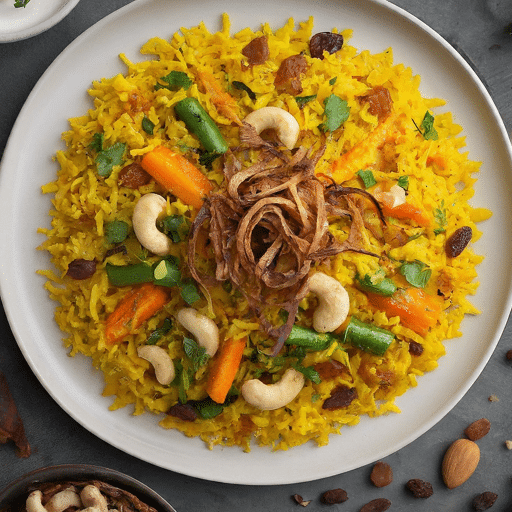
Aromatic rice pilaf cooked with meat vegetables and spices
Mughlai Pulao is a fragrant and flavourful rice dish that is a staple in Mughlai meals. Made with long-grain basmati rice, it is cooked with various spices, aromatic herbs, and a generous amount of dry fruits. Adding saffron gives the pulao a beautiful golden hue and adds a subtle yet distinct flavour. Mughlai Pulao is often served as a main course or part of a festive meal and pairs well with various curries. The combination of rice, spices, and dry fruits makes this dish a delight for the senses.
Chicken Biryani
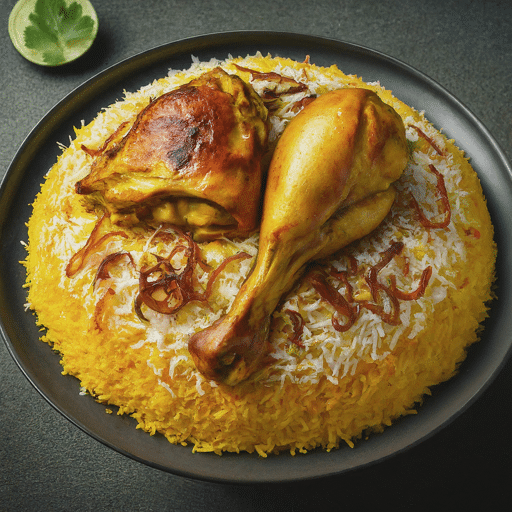
Rice dish with chicken and spices cooked in a sealed pot
Chicken Biryani is a classic Mughlai dish loved and relished across India. This flavourful rice dish is made by layering aromatic basmati rice with succulent pieces of chicken and a blend of spices, creating a dish known as Mughlai Biryani. The Biryani is then cooked on a low flame, allowing the flavours to meld together and the rice to absorb the rich flavours of the meat and spices. Chicken Biryani is a complete meal often served with raita or a side of salan. This dish has variations across different regions of India, with Hyderabad and the Indian cities of Bhopal being known for their unique and delicious versions of Mughlai Biryani.
Also Read: How to make Chicken Tikka Masala?
Mutton Biryani
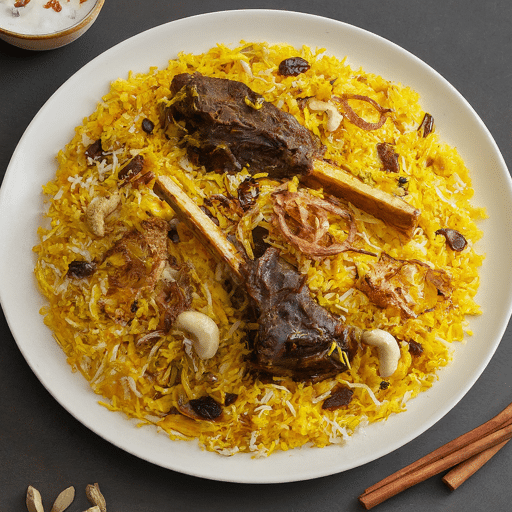
Layered dish of rice mutton and spices cooked in a sealed pot
Impress your guests with the irresistible allure of our hearty mutton and rice delight—mutton Biryani. This flavourful Biryani is made with tender pieces of mutton marinated in a blend of spices and then cooked with fragrant basmati rice. Mutton Biryani is layered with fried onions, saffron-infused milk, and a generous amount of ghee, giving it a rich and indulgent flavour. It is a favourite among meat lovers and is often served on special occasions and festivals. The dish is best enjoyed with raita or mirchi ka salan.
Hyderabadi Biryani
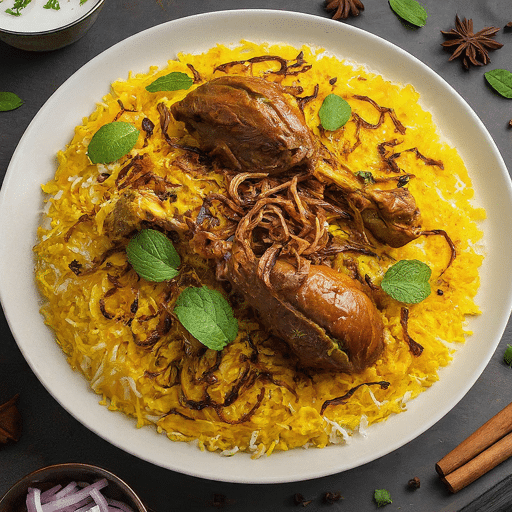
Flavourful biryani from Hyderabad India often made with lamb or chicken
Hyderabadi Biryani is a famous and flavourful rice dish that hails from the southern region of India. This mixed rice dish is made with aromatic basmati rice, tender pieces of meat, and a blend of spices. The meat is marinated in a mixture of yoghurt and spices, giving it a rich and distinct flavour. The dish is then layered with partially cooked rice and slow-cooked on a low flame, allowing the flavours to meld together and the rice to absorb the essence of the meat and spices. Hyderabadi Biryani and also Hyderabadi Mutton Biryani is often garnished with fried onions and saffron-infused milk, adding a touch of elegance to this delicious dish.
Kebab Biryani
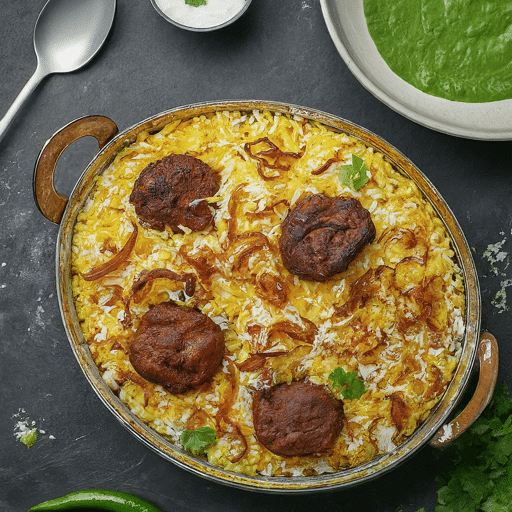
Biryani made with kebabs instead of whole meat pieces
Kebab Biryani is a delightful fusion of two classic Mughlai dishes – kebab and Biryani. This flavourful dish is made by layering fragrant basmati rice with succulent kebabs and a blend of aromatic spices. The kebabs are made with minced meat marinated in a mixture of spices and then grilled to perfection. The layers of rice and kebabs are then cooked on a low flame, allowing the flavours to meld together and the rice to absorb the essence of the kebabs and spices. Kebab Biryani is a true indulgence and is a must-try for those looking to experience the rich flavours of Mughlai cuisine.
The Dessert Delights of Mughlai Cuisine
While Mughlai cuisine is known for its rich and flavourful meat dishes, it also offers many delicious desserts. Here they are
Barfi
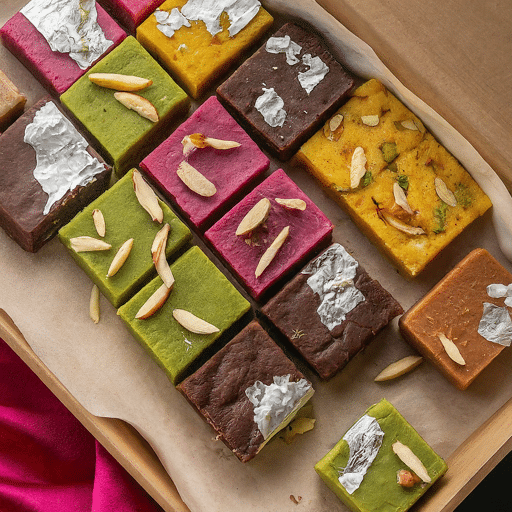
Sweet Indian confection made with milk sugar and nuts
Barfi is a popular Indian dessert made with condensed milk and sugar. This milk-based sweet is often flavoured with cardamom or other aromatic spices and is garnished with nuts. Barfi is a versatile dessert with various flavours and textures, including plain, chocolate, and fruit-flavoured variations. Barfi’s sweet and creamy texture makes it a delightful treat that people of all ages love. Whether enjoyed on its own or as part of a larger meal, Barfi is a classic Mughlai dessert that will satisfy your sweet tooth. If you are fond of dry fruits, try Pista Burfi to relish the taste and health.
Shahi Tukda
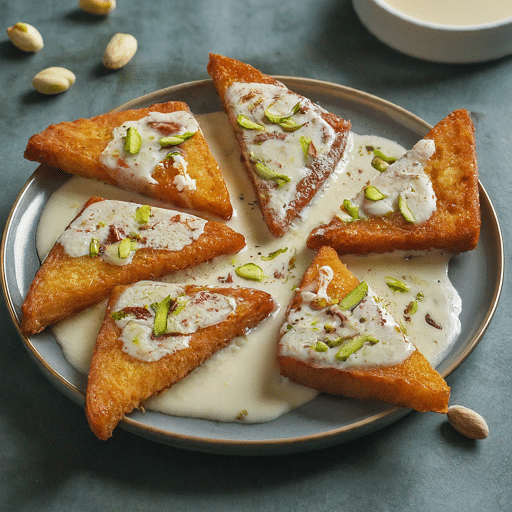
Bread fried in ghee or butter then soaked in a sweet milk syrup
Shahi Tukda is a traditional Mughlai dessert that is a true indulgence for those with a sweet tooth. This delicious dessert is made with fried bread slices soaked in a sweet and fragrant syrup, often flavoured with cardamom and saffron. The bread slices are then topped with a generous amount of thickened and sweetened milk and a sprinkle of finely chopped nuts. Shahi Tukda is a perfect way to end a Mughlai feast and is often served at festive occasions and celebrations. This rich and decadent dessert is a must-try favourite among dessert lovers when exploring Mughlai cuisine.
Kulfi
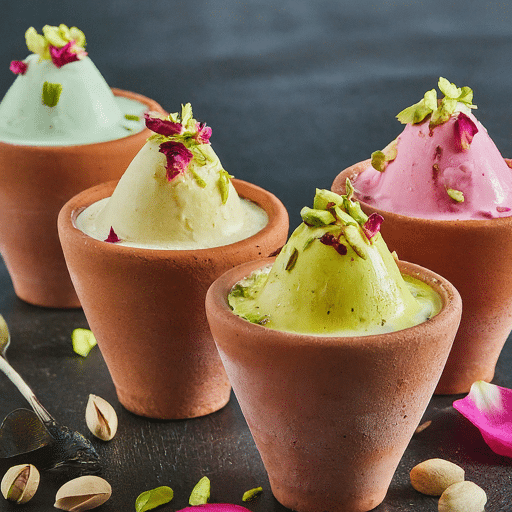
Dense frozen Indian ice cream made with milk sugar and nuts
Kulfi is a popular frozen dairy dessert often enjoyed as a sweet treat in Mughlai cuisine. Made with thickened milk, sugar, and various flavourful ingredients like pistachios, cardamom, and saffron, Kulfi has a rich and creamy texture similar to ice cream. The dessert is traditionally prepared by slow-cooking the milk until it reduces and thickens, then pouring it into moulds and freezing it. Kulfi is often garnished with chopped nuts or a sprinkle of saffron, adding a touch of elegance to this delightful dessert and Badam Kulfi is indeed one of the best examples in this category.
Jalebi
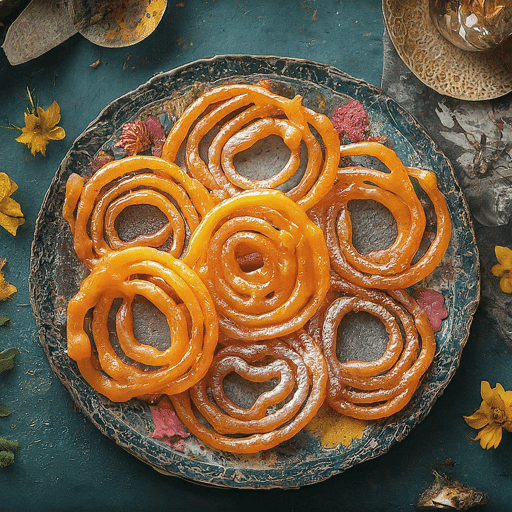
Deep fried batter spirals soaked in a sweet syrup
Jalebi is a popular sweet snack famous across India and often enjoyed as a street food delicacy. Made by deep-frying a fermented batter in a circular shape and then soaking it in a sugar syrup, Jalebi has a crispy and crunchy texture on the outside and a sweet and syrupy centre. The dessert is often enjoyed warm and is best served with a side of rabri or a dollop of yoghurt. Jalebi is a must-try when exploring Mughlai cuisine’s sweet and indulgent flavours.
Gulab Jamun
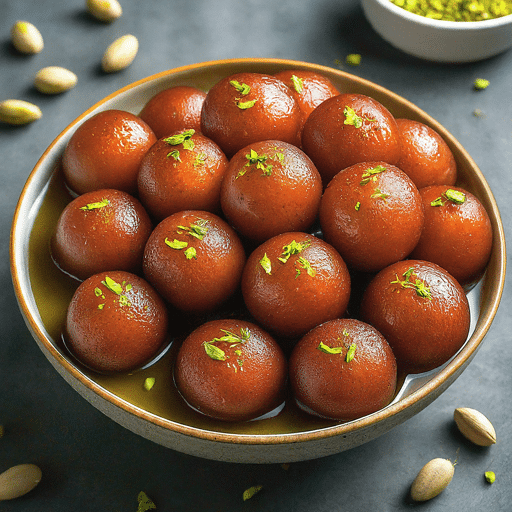
Milk solids soaked in a sweet syrup then fried until golden brown
Gulab Jamun is a popular Indian dessert often enjoyed during festivals and celebrations. These sweet and syrupy dumplings are made with milk solids kneaded into a dough and then shaped into small balls. The balls are deep-fried until golden brown and then soaked in a sugar syrup flavoured with cardamom and rose water. Gulab Jamun is soft and spongy and often garnished with chopped nuts or a sprinkle of saffron. This classic Mughlai dessert is a favourite among dessert lovers and is a must-try when exploring the sweet delights of Mughlai cuisine.
Conclusion
Indulge in the rich flavours of Mughal cuisine with these top dishes that promise a culinary journey like no other. From the aromatic Chicken Korma to the royal Shahi Tukda, each dish is a delight for your taste buds. Whether you savour the meaty Nihari Mutton or opt for vegetarian delights like Kulfi and Gulab Jamun, Mughal cuisine offers diverse options to please every palate. Dive into the history and evolution of Mughal cooking, understanding its unique ingredients and the reasons behind its everlasting popularity. Embark on a gastronomic adventure and experience the royal legacy of Mughal cuisine through these exquisite dishes.
Frequently Asked Questions
What Makes Mughlai Cuisine Unique?
Mughlai cuisine is unique for its rich gravies, unique blend of spices, and influence of the Mughal Empire. It reflects the culinary traditions of the Mughals, who introduced a variety of dishes that continue to be loved and cherished today.
Can Mughlai Cuisine Be Vegetarian?
Yes, Mughlai cuisine offers a variety of vegetarian options. Paneer, a type of Indian cheese, is often used as a substitute for meat in Mughlai dishes. Vegetarian dishes like Malai Kofta and Shahi Paneer are popular choices for those looking to enjoy the flavours of Mughlai cuisine.
How did the Mughlai cuisine originate, and why is it so popular?
Mughlai cuisine originated in the royal kitchens of the Mughal Empire, which ruled the Indian subcontinent. The cuisine is a result of the Persian influence on Indian cooking, and its popularity can be attributed to the indulgent and flavourful dishes that the Mughal emperors enjoyed.
What are the key ingredients used in Mughal cooking?
Key ingredients used in Mughal cooking include a variety of aromatic spices, ghee (clarified butter), dry fruits, and aromatic herbs. These ingredients create rich and flavourful dishes that are characteristic of Mughlai cuisine.
How has Mughal cuisine evolved?
Mughal cuisine has evolved, incorporating new dishes and adapting to modern culinary trends. While traditional recipes have been preserved, new dishes have been introduced to cater to the changing tastes and preferences of the Indian palate.

